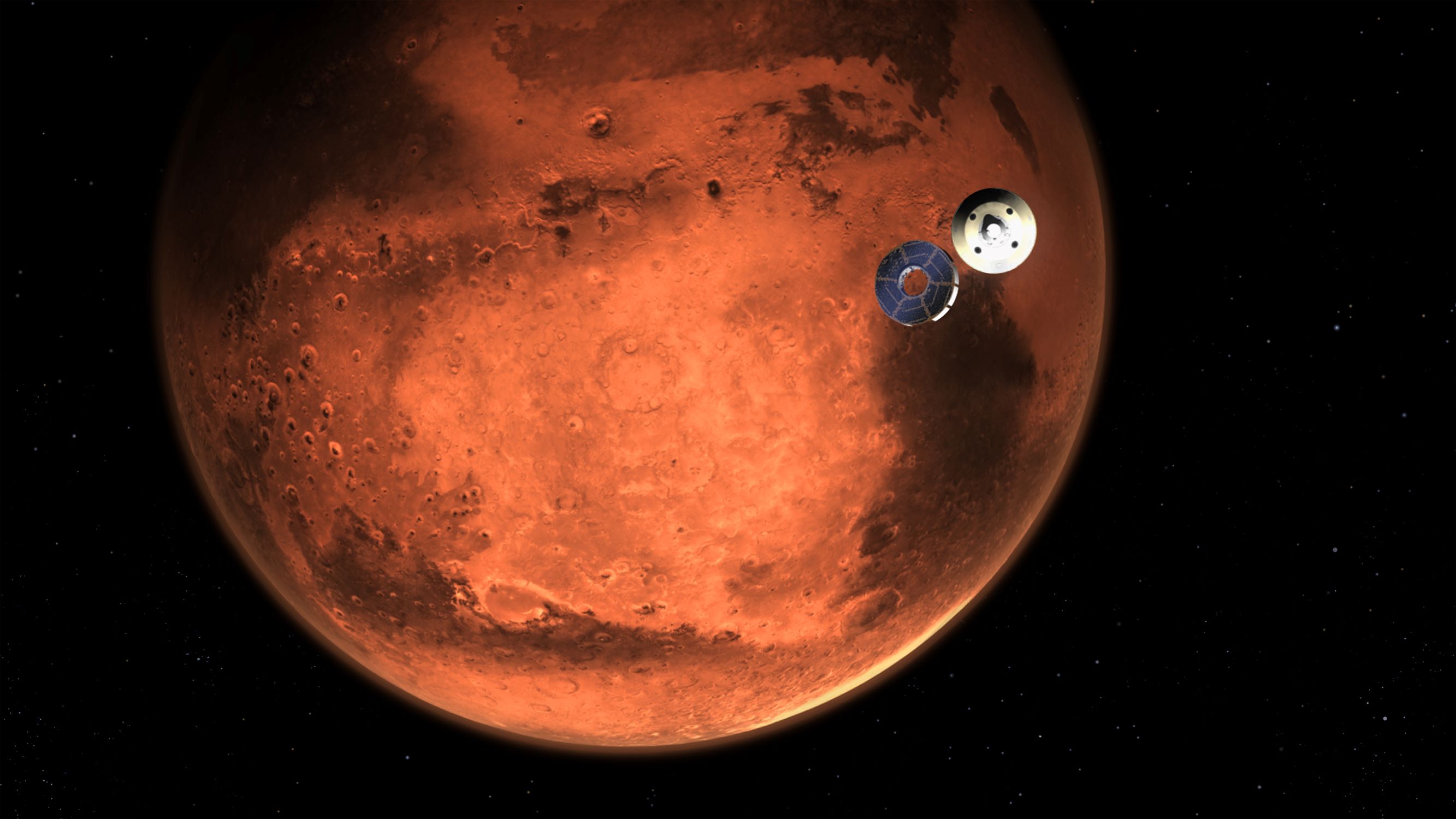How to Teach NASA’s Mars Landing
NASA’s Perseverance Rover is scheduled to land on the Red Planet Thursday. Here’s how to stream the event in-class and get your students ready.

To call it a teachable moment is something of an understatement.
NASA’s Perseverance rover is scheduled to land on the Red Planet on Thursday, at 3:55 p.m. ET.
“For a number of students, this will be the first Mars landing that they've heard of or been engaged in,” says Ota Lutz, PhD, and Lead for STEM Elementary and Secondary Education Group at NASA’s Jet Propulsion Laboratory. “It can kind of be a seminal moment for them to remember in their childhood. They're going to remember when this Mars rover landed like some folks remember the landing on the moon.”
The car-sized rover will search for signs of ancient life, collect and store samples for future return to Earth, and demonstrate a variety of new exploration techniques.
NASA and Discovery Education are streaming the landing live here starting at 2:15 p.m. ET, and that link will also offer educators many resources for sharing the landing with their classes.
Christine Anne Royce, Ed.D, co-director of MAT in STEM Education Shippensburg University, encourages any educator who is able to incorporate the landing into their class to do so. “Even if it's just a conversation at the very beginning of class, or asking students if they had to name the rover, what would it be? At least provide an opportunity for the students to discuss it,” says Royce who also is the past president of the National Science Teaching Association.
Royce adds that the landing lends itself well to remote or hybrid classes. “Everything that we're gonna find out about Mars is virtual, and what better way to do it than virtually,” she says.
Tools and ideas to transform education. Sign up below.
Here are some quick ways you can incorporate the event into your classes.
Design Your Own Landing Craft Exercises
NASA’s Mission to Mars Student Challenge is a good place for educators to start. Its programs launched five weeks ago but it is designed with flexibility in mind, so it’s not too late to participate.
Lutz advises educators to explore the videos on the site and consider having students engage with some of the lander-building exercises offered. “For younger students, we have them experiment with parachutes and making parachutes out of things such as paper napkins and grocery bags,” she says. “For a little bit older students, upper elementary middle school, we have building a Mars lander and testing that. Then, for high school and middle school students, we have some coding challenges for coding entry descent and landing.”
These exercises are designed to teach students the engineering challenges involved in Perseverance’s landing. “Say you try something, it doesn't work, you redesign and you try again,” Lutz says.

Teach The Landing in Non-Science Classes
Although it’s seen as a STEM-focused event, the Mars landing can be integrated into other classes.
Amanda Wood, a high school English teacher from Spring Branch ISD in Houston, Texas, has been having her students read and analyse magazine articles about topics related to the landing. “Most teachers know that whenever you can have any sort of cross-curricular study, it's always going to be better for kids. They're going to be better at problem-solving, they're going to be better at analyzing and going through data and information,” she says. “My advice for any English teacher who would want to do something such as this is don't be intimidated by the material. Because a lot of us grew up in school systems that made us think that we weren't good at something in particular, or we were better at something in this box, right? We’ve got to psych ourselves out of that to make sure that we can teach something as in-depth as and as important as the Mars landing.”
For one assignment, Wood had her students read a PBS NOVA article on falsifiability and relate it to the Mars landing, then find similar articles to discuss. She also had some students who were big science fiction fans who were able to do literary analysis of works by Ray Bradbury and books ranging from The Martian by Andy Weir to The Hitchhiker's Guide to the Galaxy by Douglas Adams.
Discuss The Search for Alien Life
One of the landing rover’s missions will be to search for biosignatures that indicate previous microbial life on Mars.
“We know that there was water at some point flowing on the surface of Mars, and we know that the conditions were right at some time in history for life to have existed on Mars,” Lutz says. “So that's like this huge question: Was there actually ever life? We know the conditions were okay, but did it develop there?”
This is a perfect jumping off point for class discussion and inquiry.
“Everybody wants to know, are we alone in the universe?” Lutz says. “Is Earth the only place that life developed or did it develop elsewhere? If the answer is, ‘Yes there's life elsewhere,’ that's profound, that's amazing. And if the answer is, ‘No, life didn't develop anywhere else,’ that's also profound, like ‘Wow, what was so special about earth?’”
Royce says educators can also delve into the questions of what life on another planet might look like. “We have extreme life forms in the deep sea on our own planet, is that similar to what we might have on other planets?” she says. “The question of are there other life forms out there is exciting. It also is a little scary to students and that's why having conversations in the classroom helps them think about that. It takes away that total unknown.”
Erik Ofgang is a Tech & Learning contributor. A journalist, author and educator, his work has appeared in The New York Times, the Washington Post, the Smithsonian, The Atlantic, and Associated Press. He currently teaches at Western Connecticut State University’s MFA program. While a staff writer at Connecticut Magazine he won a Society of Professional Journalism Award for his education reporting. He is interested in how humans learn and how technology can make that more effective.

